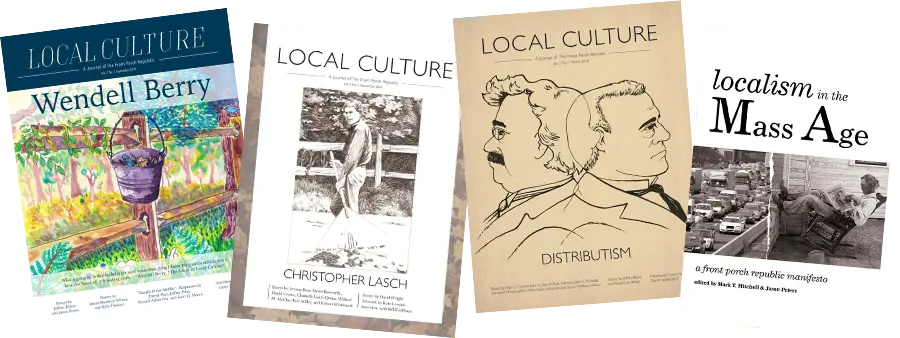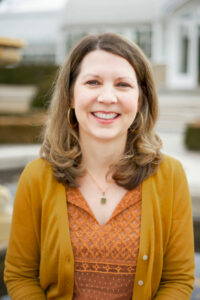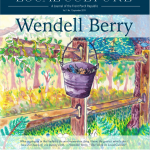In first grade, I had the misfortune of being the first left-handed student Mrs. Posey had ever taught. I sat in the front row by her desk “because you’re different,” she huffed. My five-year-old mind thought she was an ancient grump. She grumbled when she “had to” give me a pair of left-handed scissors. She grumbled when she corrected my pencil position. I felt her glare at the slant of my letters.
I was plain scared of her, and I’m pretty sure others were too. Whether Mrs. Posey knew it or not, her classroom had a culture. Every first grade classroom does. Every type of classroom, in fact, has structure, routine, and expectations, intentional or not. And the teacher is the core of that culture.
Mandi Gerth’s Thoroughness and Charm: Cultivating the Habits of a Classical Classroom addresses this very issue. Classroom culture may develop accidentally, but the truth is that a neutral classroom does not exist. Although her apologia is intended for classical Christian educators, Gerth speaks to all teachers: “To be great teachers, we must do so consciously and intentionally, for we cannot avoid crafting culture, and we must be careful of the message we send.”
Gerth first establishes the foundational ideals of classical education. It’s not a dull, dry history but rather a personable and hope-filled conversation. Gerth explains how the Western tradition has lasted centuries because its very ideas are living and lasting. The essential human questions that form the backbone of classical education have been asked since humankind fell.
Instant knowledge is too easy, Gerth says. I know I want to have the big picture understanding she mentions, to see the scope of history and tradition, and I want the same for my students. Steeping our students in a long, unfolding tradition may appear a pat answer to an instant Google query, but it’s what students in fact need. Gerth writes that in the day to day, “We must hope for moments of transcendence—moments that appear ‘out of nowhere’ and bring with them glory, understanding, and soul transformation.” In this vein Gerth maintains that classical Christian educators are not reinventing ideas or practices but rather returning. That is why we point our students to “the things that are eternal, the things that last, the things that are classical,” things that have been preserved by God’s providence.
With lively examples ranging from Dahl’s Matilda to Machiavelli’s The Prince, Gerth also makes clear that knowing these foundations will not help a teacher in the classroom if she cannot manage a class. She is a guardian, a keeper, a monarch with divine right, one who “must embody the classical tradition and create a classical classroom culture that reflects the same.” Here, Gerth adds questions and examples that all teachers can use to evaluate their role and choices in the classroom.
By the second chapter, Gerth adds that effective teachers should work to understand the ideas, thinkers, and works of the classical tradition because that work will change them, their focus, their approach. It’s the idea of enculturation. If we indeed become what we love, “we pass on an embodied tradition our students have the ability to emulate.” This, too, is culture, one undergirded by our faith. As teachers we must ask what is worth contemplating, what is worth our affections, and then teach our students the same practice. Like Augustine, we must teach our students how to order their loves by teaching them how to judge something according to how it adheres to reality—how true it really is.
Gerth next addresses the role of the imagination in the embodied tradition. As a whole, this chapter is more philosophical and not as palatable to new teachers. Citing scholars Dr. Donald Cowan, Dr. Louise Cowan, David Hicks, and others, Gerth comments on the need to counter the digital age and instead nurture the imagination within the family and the classroom. I agree that this is ground that must be regained and reestablished; the theoretical tone of this chapter, however, focuses on the mythic component of classical education and how it connects to imagination and moral formation.
Weighty and worthy quotes fill the pages. Gerth, for example, refers to David Hicks’s proposal that “myth teaches the Ideal Type by example, not by precept, and allows the student through his imagination to participate in the past, partaking of the Ideal.” Or, I might rephrase it to say, Ideal creates an image which affects the imagination and how the Ideal is received. I do think truth can be perceived this way, but I wonder at how easily a primary teacher could use this concept in seeking to build a healthy classroom culture. A classroom undoubtedly is more than a place where students acquire skills and memorize facts, but we need vivid, practical visions of the alternative to guide our efforts. We as teachers can know that our spaces are a tool, a place, that provides images for our students’ imaginations—images that have meaning—which can potentially create more meaning for the student. And this meaning allows us to see our role in the story and embrace new truths. But “reading reality mythologically” sounds too complicated for the intended audience.
And Gerth does provide some of this grounding as she smoothly shifts from lofty definition to practical application in chapter 4. The best teachers are, first and foremost, students of their disciplines, and Gerth encourages both the weary-worn and the newly-minted teachers by providing anecdotes from her classroom experience. Gerth aptly writes, “Your embodied values, shared experiences, and common language communicate to your students what you believe is most important about the curriculum you teach and the God you worship—what you ultimately believe is the whole point of your time together.”
The final chapters are rich with ideas for creating order and establishing routine by bringing students together. Call it liturgy, catechism, or routine, but all of it comes together to create the classroom culture. I can’t help but think of the college class I took on classroom management years ago. I was asked to think ahead to possible interactions I might have with students. What would I do? How would I respond? These steps are all well and good, but Gerth’s directive goes beyond that to intention and design, the eternal design of each human in our care, including ourselves. This holistic approach must include consistent self-evaluation, and Gerth provides just that in chapter 5. Questions like, what would my students say is most important to me? Which rules do I consistently enforce? Which rules do I let slide? Do our practices tether us to the “ultimate Story”?
A hopeful book, one of both foundations and ideals, Thoroughness and Charm: Cultivating the Habits of a Classical Classroom has three purposes. The first is to defend classical Christian education, and by defense, Gerth by trade defines her terms. The second is to shape, molding both the teacher and the classroom. The third is to unify all in how we live and look at the world. In the eponymous lines Gerth cites from Aquinas’ prayer, “Creator of all things, true source of light and wisdom, . . . let a ray of your light penetrate the darkness of my understanding. . . Grant me the talent of being exact in my explanations and the ability to express myself with thoroughness and charm.”
Image Credit: Charles Bertrand d’Entraygues, “Concert in the Classroom” via GoodFon








2 comments
Ray Stevens
Interesting, I am left handed also and when my elementary school teacher came to teaching “penmanship” I was put in the back row of the class and told to “do the best you can!”
I like to think that I was smart enough to do it and she knew it. I was wrong.
Ray Stevens
P.S. This was when we used liquid ink from an inkwell in our desk and dipped the pen in the ink. At least it was not a goose feather! rs
Christine Norvell
I think a lot of teachers in certain decades didn’t know what to do or not do with left-handed children, but we all have unique stories because of it!